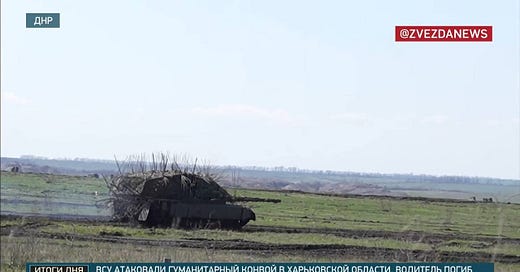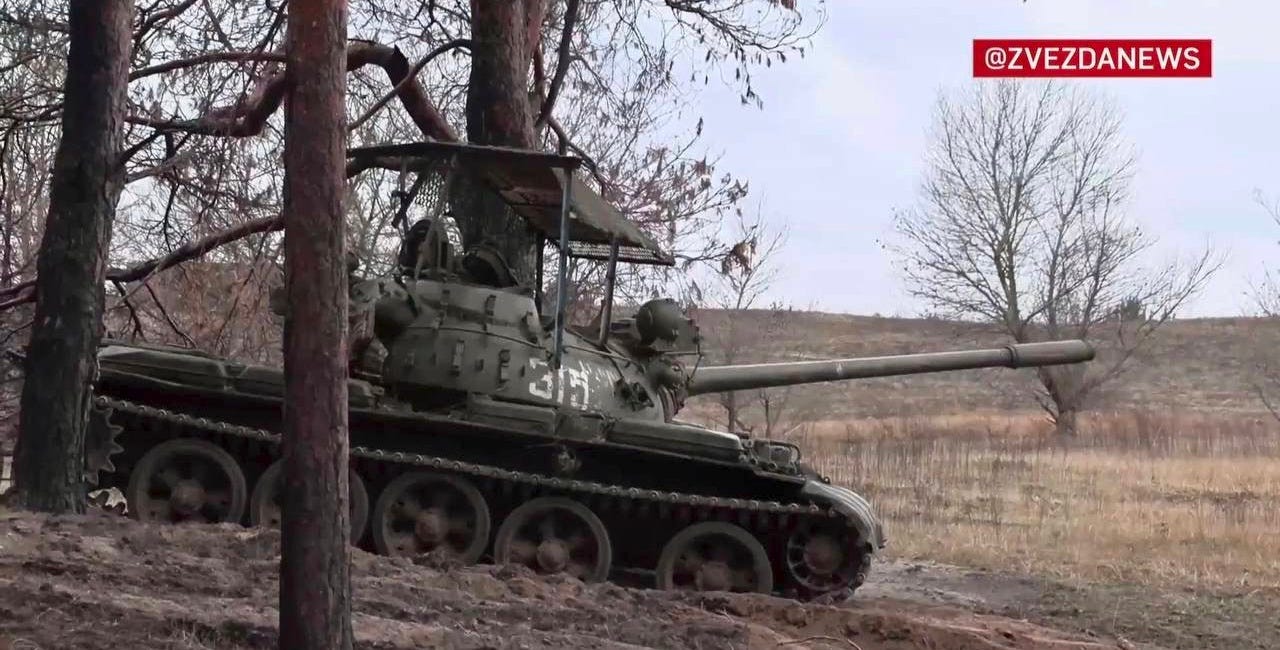First the Russians Invented 'Turtle Tanks' to Ward Off Drones. Now They've Invented 'Porcupine Tanks,' Too—By Adding Metal Spines.
Porcupine armor is the latest anti-drone innovation.
When Russian troops in eastern Ukraine’s Donetsk Oblast welded hundreds of stiff metal wires to their BMP fighting vehicle recently—clearly hoping the porcupine-like spines would trigger incoming first-person-view drones a safe distance from the vehicle—it wasn’t a random, one-off experiment.
No, the porcupine armor is proliferating. Last week, Russia’s Zvezda TV broadcast a report on a Russian tank unit on the Pokrovsk front in eastern Ukraine—and the tanks all had rebar spines, similar to the spines on the BMP. (See video above.)
The spines are the fourth layer of anti-drone defense on those particular tanks. First, the tanks’ own armor offers some protection—although there are lots of weak spots on the top, in the rear, along the treads and between the turret and hull.
On top of the baseline armor, the tanks have so-called “cope cages”—that is, metal grates extending feet from the turret and hull that are designed to detonate FPVs before they strike the tanks themselves.
The spines are the third layer. “Bundles of metal wire like these are welded directly onto the cope cage,” Zvevda noted.
“Before a combat mission, they are fluffed up,” Zvezda contined. “The tanks turn into an iron hedgehog”—porcupine is more accurate—“and when FPV drones attack, they run into these needles.”
The fourth layer of protection comes from the short-range radio-jammers that can be found on many Russian vehicles. That the Russians are adding additional layers of physical protection points to possible issues with the jammers.
It’s also possible the metal spines themselves might interfere with the jammers’ signals, according to the pro-Ukrainian Conflict Intelligence Team. “It raises questions about how such modifications affect the effectiveness of [electronic warfare] systems,” CIT noted.
But if the jammers are already ineffective—a distinct possibility given Ukraine drone operators’ transition to frequency-hopping controls or even fiber-optic drones that don’t rely on wireless radio links—why not try spines?
There’s another risk, however. It’s already difficult for the crews of up-armored tanks to escape their vehicles after taking a hit. The spines could exacerbate the issue. CIT wondered aloud whether porcupine armor may “hinder the crew’s ability to quickly exit the vehicle.”
Awkward and ungainly
There’s no denying the spines are ugly. Counter-drone innovations may look especially awkward in their first iterations. The cope cages the Russians began bolting onto many vehicles as early as the first year of the wider war are now standard equipment on vehicles on both sides.
So-called “turtle tanks” with additional layers of sheet metal atop their cope cages are funny-looking, too, but that doesn’t mean they don’t work sometimes. Examples abound of the reinforced vehicles shrugging off multiple drones.
How well metal anti-drone spines perform in combat remains to be seen. The very first porcupine vehicle, the BMP, came to a bad end during an assault on Troitske, a town just north of Bahatyr in Donetsk Oblast, on or just before May 24. An FPV drone from the Ukrainian Birds of Magayr unit flew into the open hatch of the idling BMP.
The immobilized vehicle burned … and then exploded. “Badaboom!” a Birds of Magyar member crowed as he narrated a video—captured by a Ukrainian surveillance drone—depicting the BMP’s fiery demise. (Go to the 4:25 mark in the video above to see for yourself.)
But the hatch may have been open, and the BMP idling, because the crew had already bailed out—possibly after the vehicle become immobilized. Maybe it ran over a mine or took a drone to the road wheels. In any event, the BMP’s destruction might not have been the fault of some flaw in its porcupine armor.
The Russians clearly believe the add-on spines might work. Despite the sheer goofiness, more and more of Russia’s precious armored vehicles are becoming porcupines.
Read more:
Russia Just Lost Its 4,000th Tank in Ukraine
The Oryx team’s tally of Russian tanks destroyed, damaged, abandoned and captured in Russia’s 39-month wider war on Ukraine now exceeds 4,000.






Tanks gotta start studying naval warfare and anti air craft guns defense of battleships.
Then again it would be impossible for Russia to manage that now.